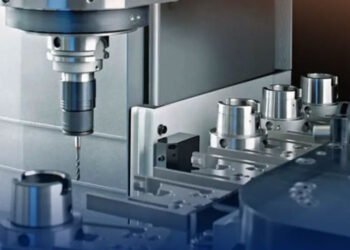Shared transportation systems bring together multiple innovations that benefit from clear mapping and analysis. From autonomous vehicles gliding through city streets to electric fleets operating on subscription models, these advancements create complex patterns of technological and social evolution.
Visual tools offer a powerful approach to analyzing these patterns, revealing hidden connections and strategic opportunities within the shared mobility ecosystem. For instance, spider diagrams are emerging as an invaluable resource for industry leaders and policymakers, providing a flexible framework to map the relationships between emerging technologies, service models, and infrastructure requirements.
Visual mapping helps stakeholders pinpoint minute connections between innovations like electric mobility platforms and artificial intelligence-driven routing systems, building more efficient transportation networks.
Understanding Shared Mobility and Its Growth
As personal vehicle ownership gives way to adaptable transport options, shared mobility continues to expand. This model combines various services—from bike-sharing to car-sharing programs—creating networks that adapt to user needs.
While numerous technologies shape the field of shared mobility, automation, data analysis, and route optimization stand out as leading innovations that promise to redefine urban transportation. These advancements work together to create more responsive and efficient mobility systems that serve diverse user needs.
Current Landscape of Shared Transportation
Public transportation sets the foundation for shared mobility systems, establishing proven models of collective transport use. Modern shared mobility expands these concepts, introducing app-based services that connect users with vehicles, rides, and micro-mobility options. These systems reduce the need for personal vehicle ownership while increasing transportation access across diverse communities.
Cities worldwide adopt shared mobility solutions to address growing transportation demands. Municipal programs partner with private operators, creating hybrid systems that serve various user groups. These partnerships test new service models, gathering data on usage patterns to refine and improve transportation offerings.
Innovation Drivers and Future Development
Population density in urban centers drives the need for efficient shared transportation options. Environmental concerns push operators toward sustainable practices, while digital technology enables new service models. The combination of these factors sparks continuous advancement in shared mobility solutions.
Recent progress in automation and data analytics opens new possibilities for shared transportation. Vehicle fleets increasingly incorporate self-driving capabilities, while real-time tracking improves service reliability. These technological improvements work together, creating responsive systems that match transportation supply with user demand.
Spider Diagrams: A Strategic Mapping Tool
Modern transportation blends multiple technologies, services, and user needs into complex networks. Spider diagrams help planners make sense of these connections by creating clear visual maps. When applied to mobility planning, these visual tools reveal critical links between innovations like electric fleets, user apps, and charging networks, helping teams spot gaps and opportunities in their transportation strategies. This method proves particularly valuable when examining how autonomous vehicles connect with subscription services, or how electric mobility links to urban infrastructure needs.
Physical Activity Benefits
Spider diagrams start with a central concept and branch outward, creating clear pathways between related ideas and developments. Create effective spider diagrams to identify connections between seemingly separate innovations in mobility planning. For example, placing “shared electric vehicles” at the center might reveal links to charging infrastructure, user apps, payment systems, and maintenance networks.
These visual maps guide planners through the interconnected nature of mobility solutions. By plotting relationships between different elements, teams spot potential hurdles and opportunities early in the development process.
Practical Applications in Mobility Planning
Transportation planners use spider diagrams to track how changes in one area affect the broader mobility ecosystem. When mapping out a new electric bike-sharing program, the diagram might show connections to existing public transit routes, mobile payment systems, and bike lane infrastructure. This visual approach highlights the necessary coordination between different city departments and service providers.
The tool also helps identify resource needs and potential partnerships. By mapping connections between different aspects of a mobility service, organizations spot areas where collaboration could improve outcomes. These insights lead to more efficient resource allocation and stronger partnerships between public and private mobility providers.
Tech and Shared Mobility Planning
From congested streets to unpredictable service times, urban mobility faces persistent challenges. Advanced AI forecasting and real-time data analysis cut delays through smart routing, detecting potential bottlenecks before they form. Smart solutions now automate fleet operations and maintenance schedules, while data-driven insights help providers fine-tune their services to match local travel patterns.
Each technological advance builds on the last, creating transportation networks that learn from past performance and anticipate future needs.
Machine Learning’s Impact on Route Efficiency
Transit operators now use real-time data analysis to predict demand surges and adjust service frequency. These predictive systems examine historical patterns, weather conditions, and local events to recommend optimal vehicle distribution. By processing millions of data points, they help operators maintain service quality while reducing operational costs.
Machine learning algorithms constantly improve these predictions by incorporating user feedback and actual usage patterns. The results allow operators to better identify underserved areas, adjust routes based on demand patterns, and allocate resources more effectively across their service networks.
Building Smarter Mobility with Connected Infrastructure
Connected infrastructure forms the backbone of advanced mobility networks, with sensors and communication systems working together to improve service delivery. Smart traffic signals adapt to real-time conditions, while automated monitoring systems track vehicle health and maintenance needs.
Digital platforms coordinate these various components, creating a cohesive system that supports multiple transportation modes. Having a robust technological framework aids operators in managing mixed fleets of traditional, electric, and autonomous vehicles while keeping high service standards.
Final Thoughts
Spider diagrams offer practical value for businesses and policymakers working to advance shared mobility solutions. By mapping connections between autonomous systems, electric fleets, and emerging service models, organizations can spot opportunities and plan strategic improvements. Visual mapping improves decision-making and builds transportation networks that meet urban needs while advancing sustainability goals.












